Parma Ham PDO: what are its characteristics and where to buy it online
Parma Ham is a typical product of the province of Parma, in particular of the Langhirano area, and is considered one of the most representative of Made in Italy, as well as being one of the most appreciated Italian products in the world.
The name, Prosciutto di Parma dop derives from the Latin locution perexsuctum, which literally means dried. In fact, Parma Ham PDO is nothing more than the leg of pork, salted and left to mature in the wind of the Parma hills.
For this reason, Parma Ham PDO is an extremely natural and genuine product and the secret of its production lies in the choice of the raw material, i.e. the pigs that are bred according to the specifications regulated by the consortium.
The pigs are bred in Italy, in particular in Parma and in the Po Valley.
Parma Ham PDO processing
The peculiarity of PDO Parma Ham lies in its protected processing and regulated by a specification which, if strictly adhered to, gives the product the brand with the ducal crown.
First of all, only fresh hind legs weighing not less than 10 kg must be used to produce Parma ham, although good quality products weighing between 7 and 9 kg may be allowed.
There are also strict rules to be respected in the choice of legs and the size of the millimetres of fat according to weight. The ham must be "sweet", as the amount of salting must be moderate and comply with the regulations of the specification. Once salted, the product is left to rest for a short period in cold storage and is then sprinkled with pork fat, called sugna. The leg is then washed to remove impurities. The product dries slowly and can be matured for a long time, for a minimum period of 12 months.
Characteristics of Parma Ham
In order to acquire the ducal crown, Parma ham must be examined by experts who can detect the specific characteristics described in the specification.
The shape of the product must reflect morphological characteristics designed to protect quality, such as: rounded shape, free of feet and imperfections; regulation of the centimetres of muscle and fat part.
The colour of PDO Parma Ham must be uniform, between pink and red, and the white parts of the fat must be visible.
The taste of the meat must be delicate and sweet, not very salty; while the aroma of the ham must be fragrant.
It must not contain any additives or preservatives; this is why it is a natural product with balanced nutritional values, also suitable for the elderly and children.
What is the difference between Parma ham and San Daniele?
For those who are not connoisseurs, it becomes difficult to understand the difference between Parma ham PDO and San Daniele ham PDO; two Italian excellences, both protected by the PDO mark.
However, there are clear differences between the two products and it is precisely the peculiarities of the products that are protected by the two respective specifications that give them the PDO mark.
Technical characteristics of the two types of ham
Meanwhile, the first obvious difference is the place of origin of the two products: San Daniele is not produced in the province of Parma or even in Emilia, but is limited to the town of San Daniele in Friuli.
As in the case of Parma ham, only healthy pork legs bred in Italy are used for San Daniele and there are parameters to be respected for the selection of the raw material; an important difference, however, is in the shape of the two hams and the cut.
The San Daniele leg, even if properly trimmed, retains the pig's "foot", a characteristic that must be missing from the PDO Parma ham, as prescribed in the specifications.
There are also important differences in the processing.
After salting and resting, in the case of San Daniele, the thighs are pressed to allow the salt to enter deeply into the meat.
It is precisely the pressing that gives San Daniele its characteristic guitar shape.
Moreover, the San Daniele must mature for at least 13 months.
Average prices of Parma ham and online shopping
The price of Parma Ham varies depending on the seasoning and the weight of the leg.
Products weighing between 10 and 14 kg are more valuable on the market, while legs weighing around 7 kg are valued less.
In general, a whole leg of ham aged 24 months can cost between 250 and 273 Euro, depending on the weight.
You can choose and buy Parma ham from the comfort of your own home via our online store; see all our available products, including whole legs and slices. By clicking on each product you can see all the characteristics of weight and months of maturation.


 Italiano (IT)
Italiano (IT)  Deutsch (DE)
Deutsch (DE)  Français (FR)
Français (FR)  Español (ES)
Español (ES)  Polish (PL)
Polish (PL) 

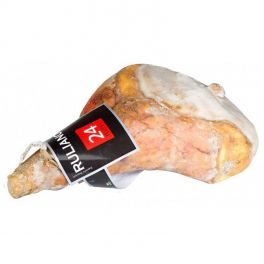
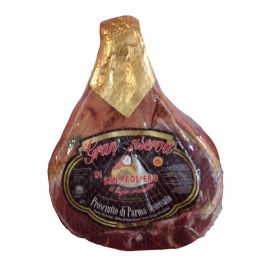
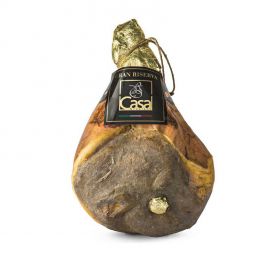
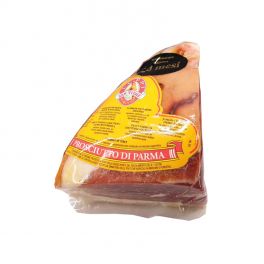

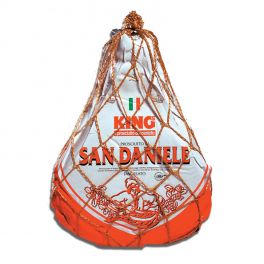
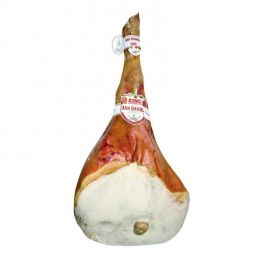
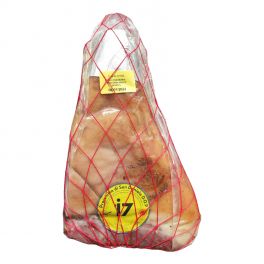
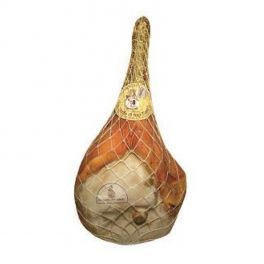

Share on: